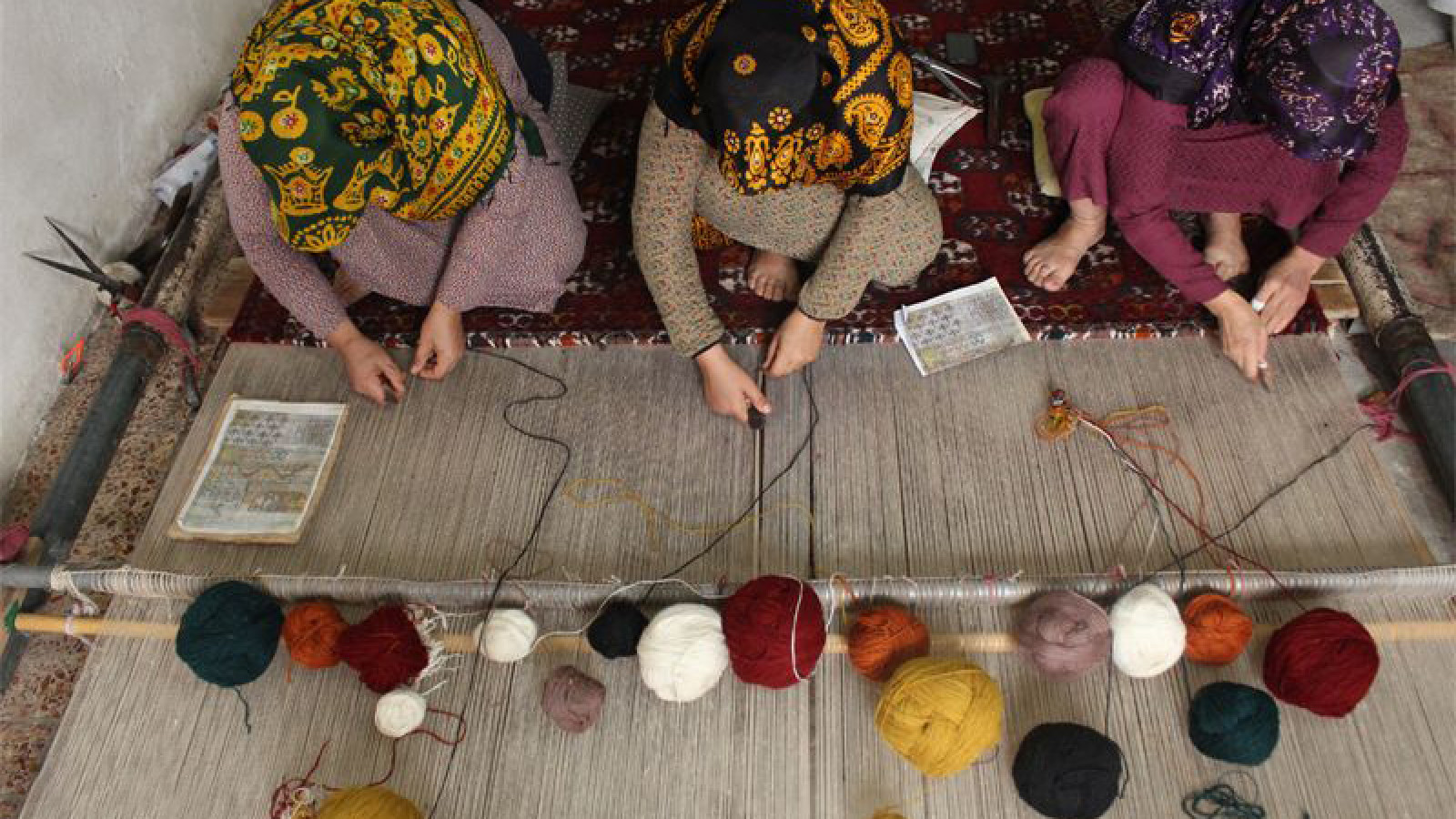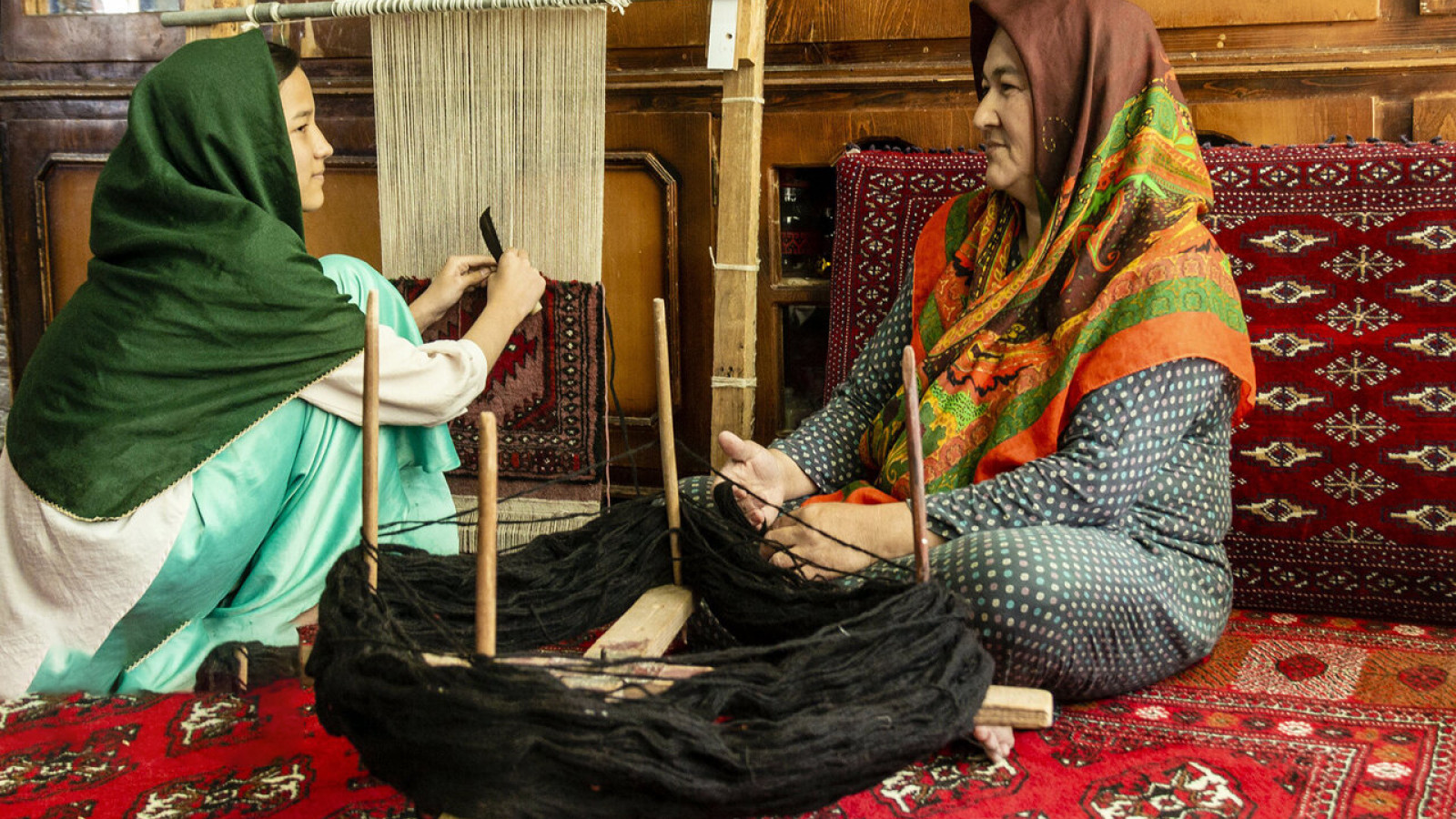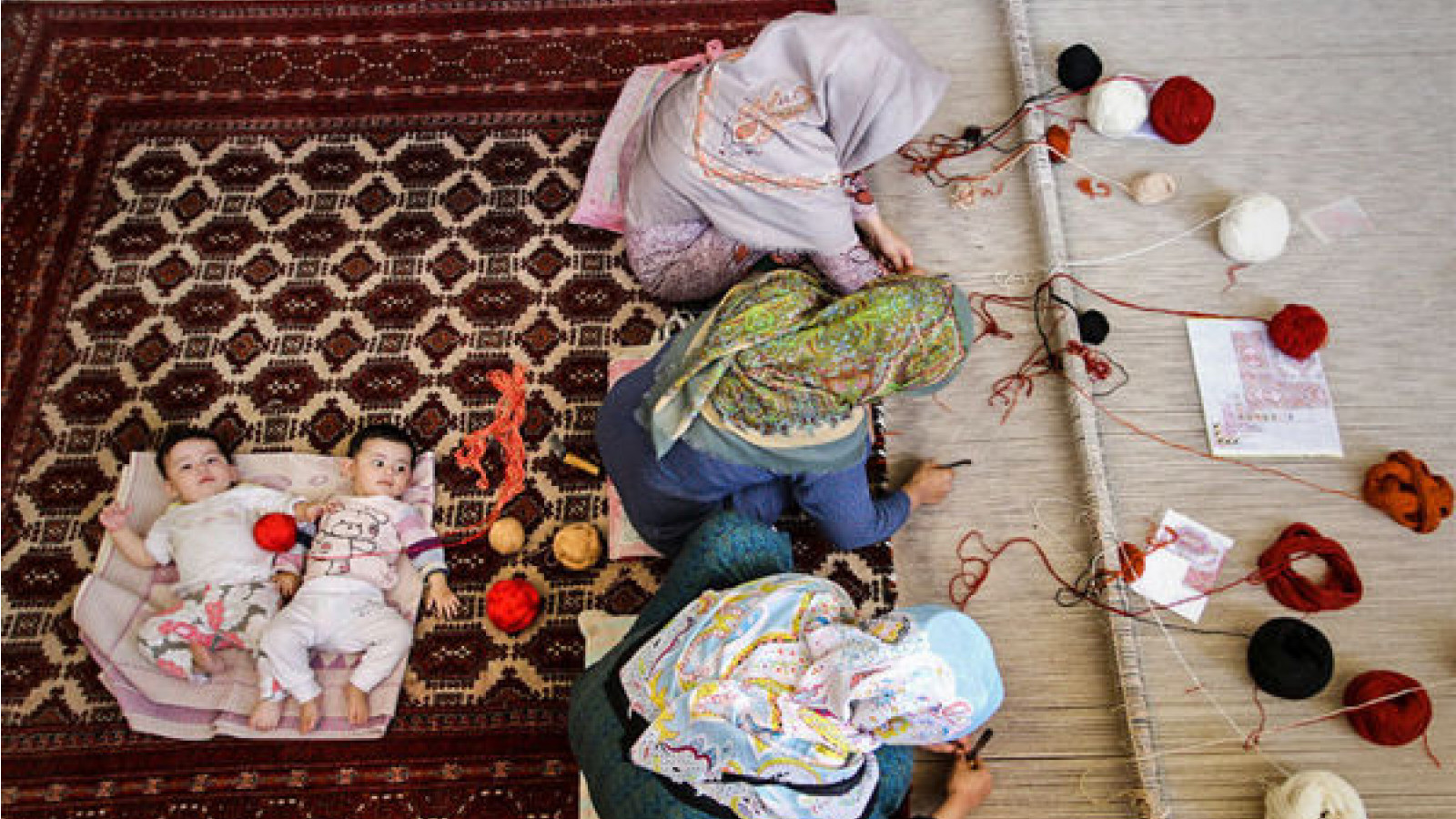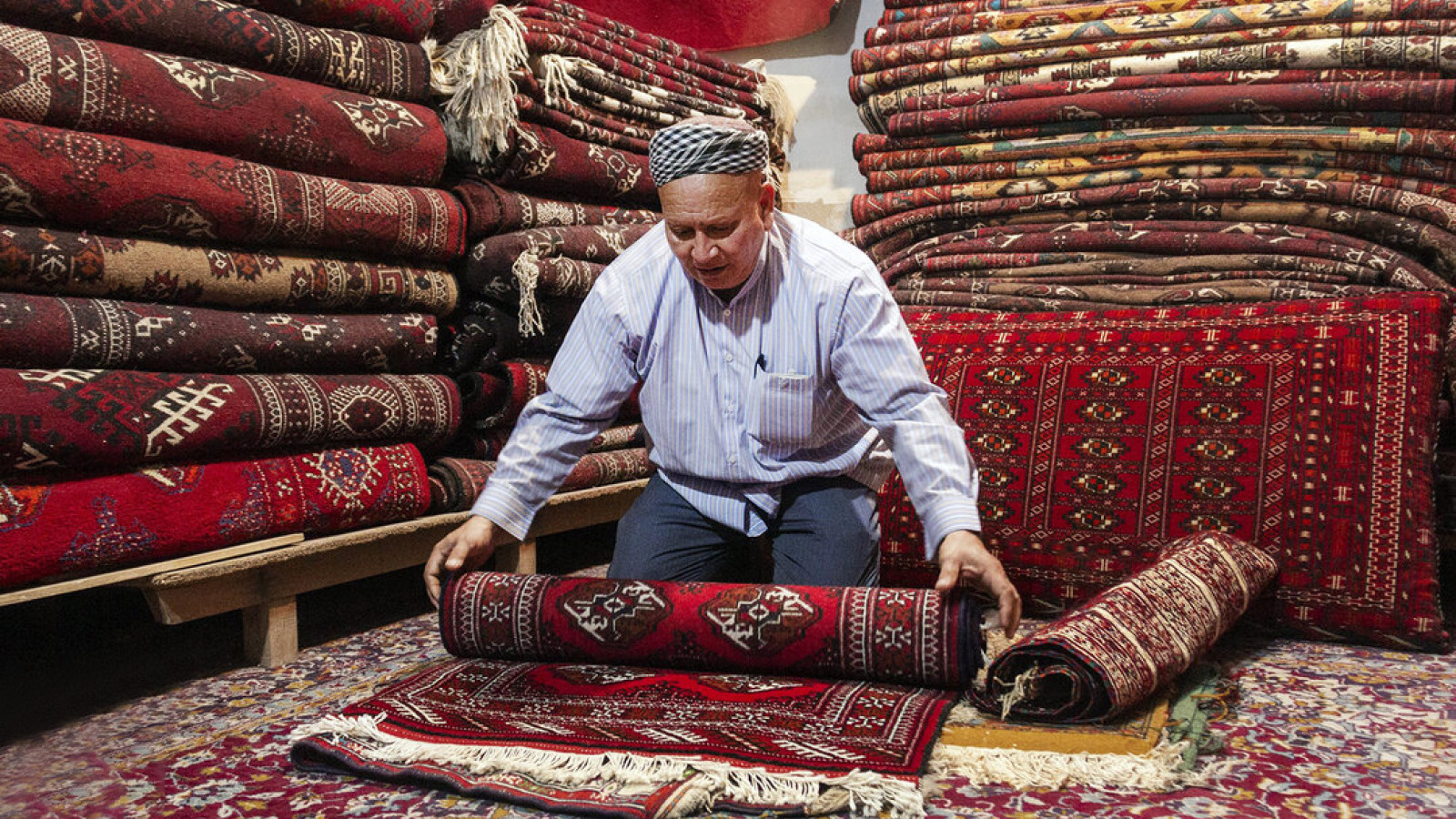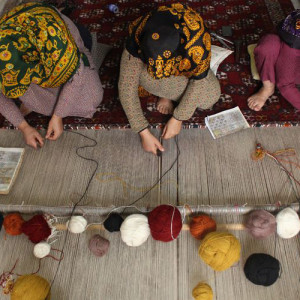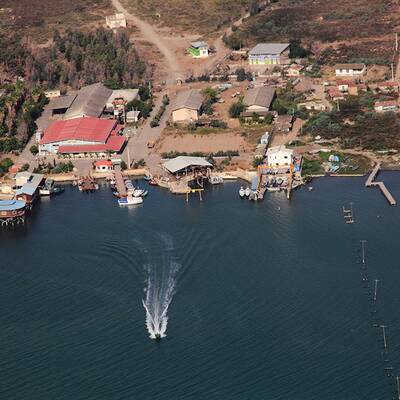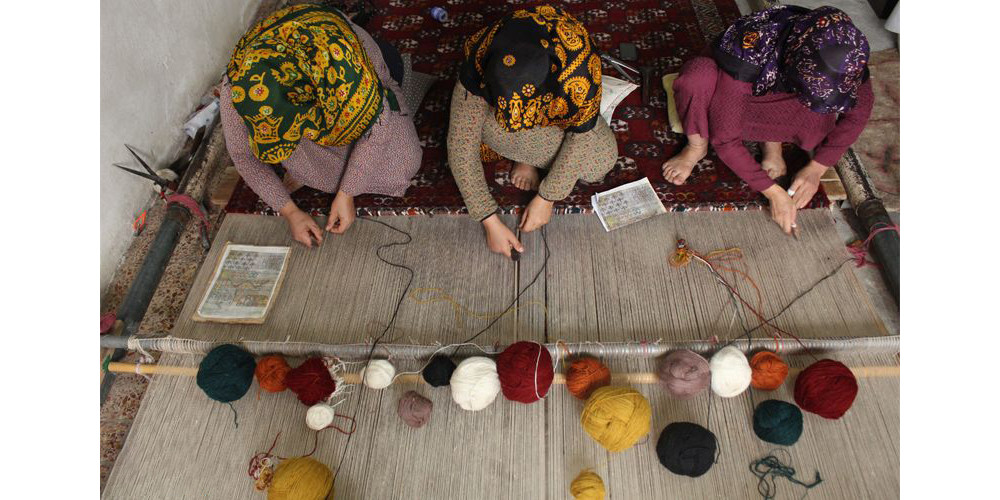
Golestan (Turkmen) Carpets
The most common handicraft of Golestan province is carpet weaving that is mostly done by Turkmen women. Carpets, rugs and Gharchins (hand bags and backpacks) are one of the finest products of Turkmen people that showcase the taste and creativity of their makers. Details and exactness incorporated into these products result in very beautiful masterpieces. Centuries ago, Marco Polo, the famous explorer, has mentioned the Turkmen carpets in his recordings, a proof that those carpets were one of the most celebrated products of central Asia. However today we know very little about the history of these carpets. The oldest surviving Turkmen carpet is about 300 years.
Turkmen carpets are usually woven on horizontal looms and dark brown in color. Almost every Turkmen family has a loom in house and carpets are a major part of their income. The motifs and patterns vary in every tribe. They are designed based on the imagination and memory of the weavers and are passed from a generation to another. Some of the most common motifs are small or large floral, totem of birds, Ghafase Go’l and Mar Gol (Medallion-like) and other motifs specific to each tribe. The researcher have identified more than 800 Turkmen motifs. Go’l is the principal motif of Turkmen carpets and is a symbolic bird nest. It is a diamond like shape, the nest, where the eggs have been laid, the chickens have hatched, and hide under the wings of their mother. On two sides of the diamond, we can see the head of the mother bird watching over the nest. Most of the carpets of this area have one large margin and many smaller ones. The largest margin is called “A’lam”. In local dialect of Turkmen this word means the rainbow. Between the A’lam we can see the pattern of a tree called “Dagh Daran”. In the culture of Turkmen people, this tree is considered holy, and totems are cut from the wood of Dagh Daran tree and used as a charm to defy harm or death. Each and every design and pattern of these carpets determine a deep connection between people of these area and their beliefs with the nature.
